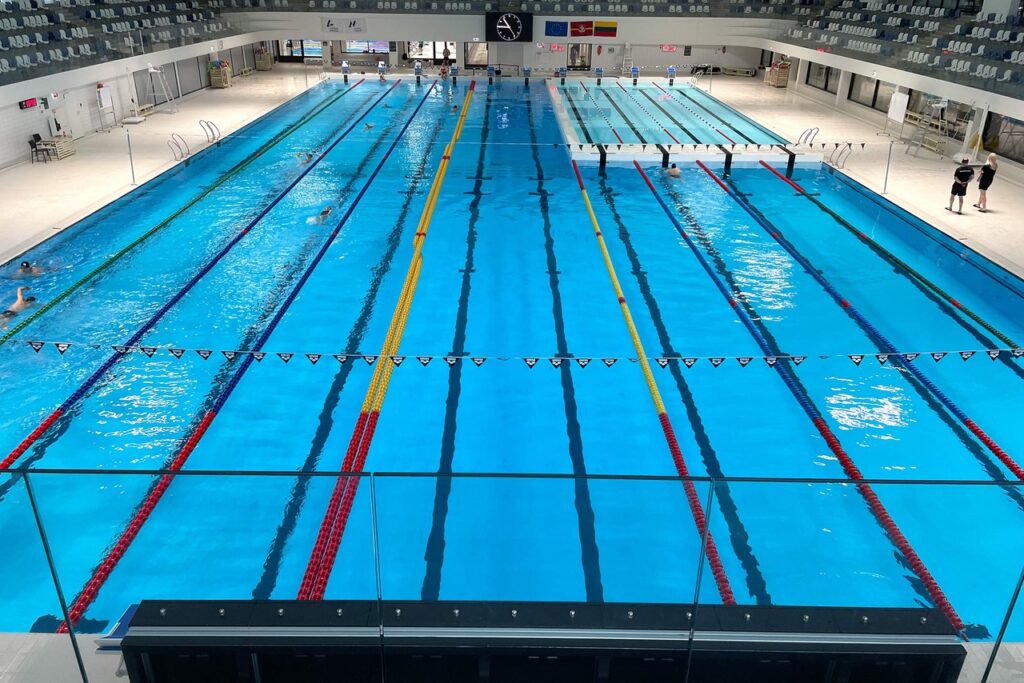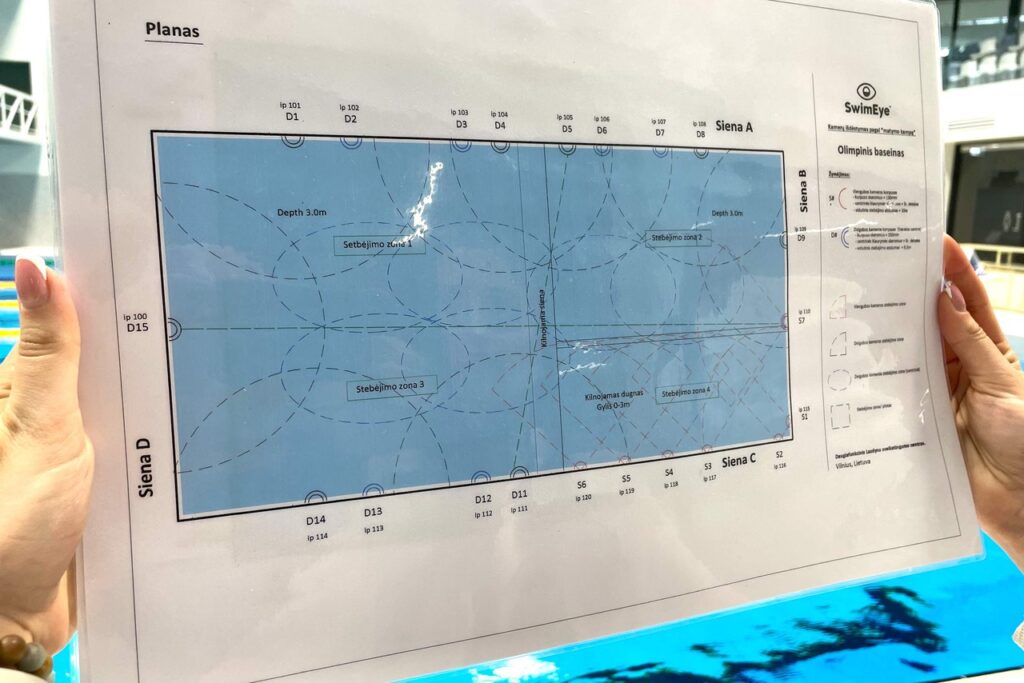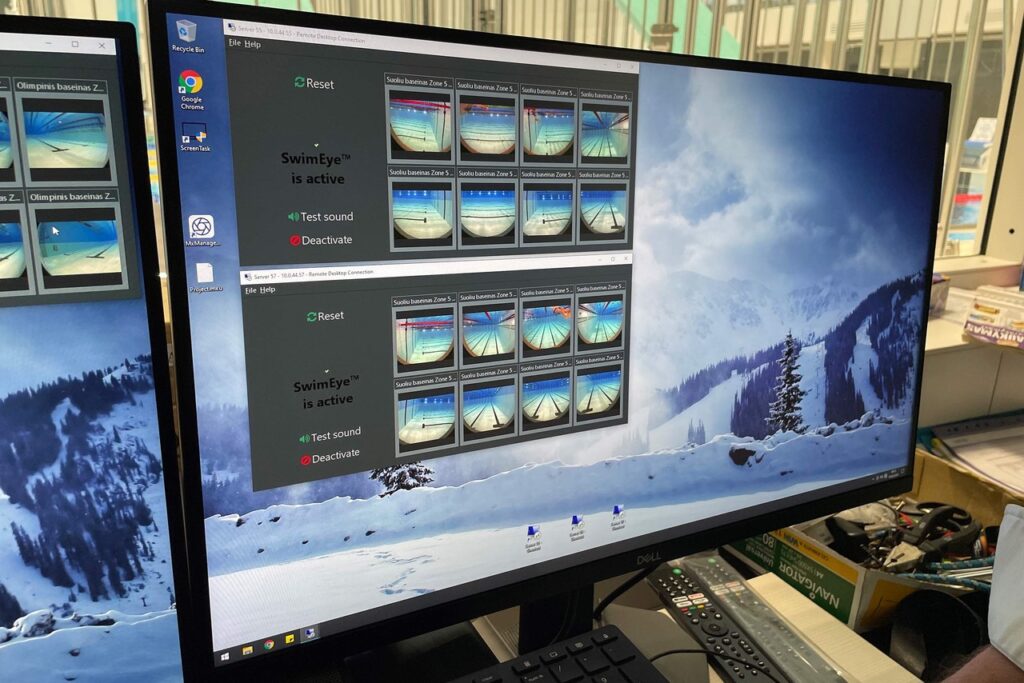With the arrival of the new warm season, the popularity of children's swimming lessons traditionally increases in Lithuanian swimming pools. Before every summer, parents want to make sure that their children will be safe during their holidays in the sea, lakes or rivers. The most modern pool in Vilnius, Lazdynai, welcomes all those who want to learn to swim armed with artificial intelligence technologies.
In order to prevent serious accidents in the water, a drowning prevention system developed by the Norwegian technology company "SwimEye" has been installed and used daily in the Lazdynai pool, which helps to record the actions of a person who may be drowning and promptly informs the pool supervisors of an impending disaster.
The system installed in the Lazdynai Basin is the first in the Baltic States. No accidents have been recorded in all swimming pools that have a drowning detection system installed. With the implementation of such an artificial intelligence system, the pool operator does not need to hire any employees with special competences, as any ordinary lifeguard can work with this system.
This AI-powered underwater monitoring system is used in many Scandinavian swimming pools: it responds to human movements and notifies rescuers when it notices atypical behavior. There are two types of messages: the early warning alarm and the danger of drowning.
Monitors hundreds of pools at once
"SwimEye technology developed in Norway has accumulated more than 100 thousand hours of personalized footage of natural human movements and drownings in water.
The cameras do not record the image of people, but only analyze their movements in the water and thus "teach" their algorithms. The constantly updated technology analyzes more and more new data over time, so the quality of protection is constantly increasing," says Rolandas Gudelis, IT manager of the company ALTAS, which introduced the system.
The system detects various anomalies and even predicts possible cases of drowning. For example, a person was swimming and suddenly stopped, and his arms or legs began to move involuntarily. The artificial intelligence system, which did not find the corresponding patterns of movements in its database, initially only informs the rescuer about the situation with a yellow signal, and after a countdown, notifies about the highest level - red danger. The accumulated database of human movements in water ensures the stability and reliability of drowning detection.
After installing such a system, every millimeter of the pool is visually monitored and when the system detects signs of drowning, it sends a visual early warning signal to the central pool monitoring console and to the rescuer on the walkie-talkie. Not only information is sent about the risk of drowning, but also about the specific sector where the incident takes place.
In order for artificial intelligence to work as reliably as possible, the system uses high-quality German Mobotix cameras, which ensure the reliability of video surveillance and meet cyber security criteria. All cameras have a resolution of 4 megapixels and are designed to not record personal features of a person, thus complying with the strict requirements of the EU GDPR.
"There are two swimming pools in the Lazdyni complex - an Olympic 50-year-old one. length and diving 25 m. length. The Olympic swimming pool is equipped with 21 underwater surveillance cameras along its entire perimeter, and the diving pool has 12 cameras on two levels, because the bottom of this extremely deep pool is movable and when the depth is reduced, some of the cameras are covered," says Lithuanian national swimming champion, Olympian and pool manager Vytautas Janušaitis.
There are two types of cameras installed in the walls of the pool - built into the wall itself and double, like domes sticking out of the wall. It depends on the functions of the pool - where the depth of the pool is adjusted by moving the bottom, cameras are installed by inserting into the wall of the pool.
"After installing the system in both pools, we checked and tested its operation. We simulated drownings with a live diver in each pool area. It was quite a challenge to install the underwater cameras, because in certain areas the bottoms of the pools rise and there cannot be any protrusions into the interior of the pool. We used about 1,5 km of various cables for the preventive drowning detection system alone. Special, high-quality and reliable German cameras were used", says Vytenis Kveselaitis, head of the company "Tvarkdarys", which installed the system.
According to statistics, when a lifeguard responds in less than two minutes, the lives of most drowning people are saved. There have been no drowning incidents in the Lazdynai pool during the entire operation of this complex.




